CII Centre of Excellence for Innovation, Entrepreneurship and Startups (CIES)
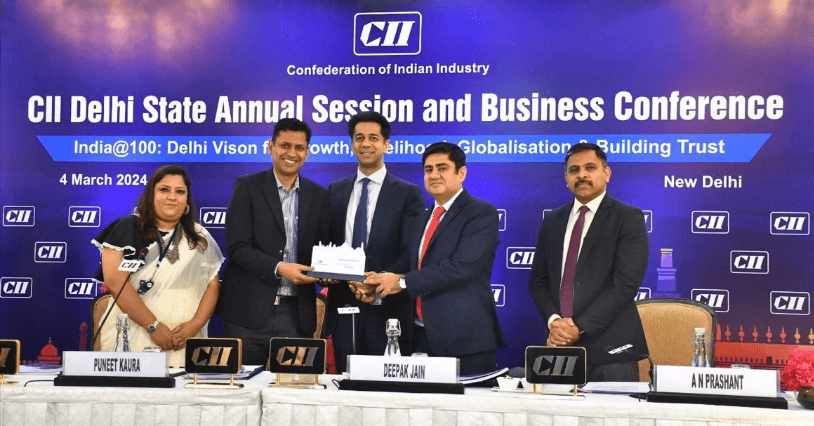
CII Centre of Excellence for Innovation, Entrepreneurship and Startups (CIES)
Date: 4th March 2023
Organizer: CII
About the Event: Rahul Garg, CEO & Founder of Moglix & Credlix received a special recognition from CII Delhi for leading the CII Startup Panel.
Moglix`s Path to Public Listing by 2026-27
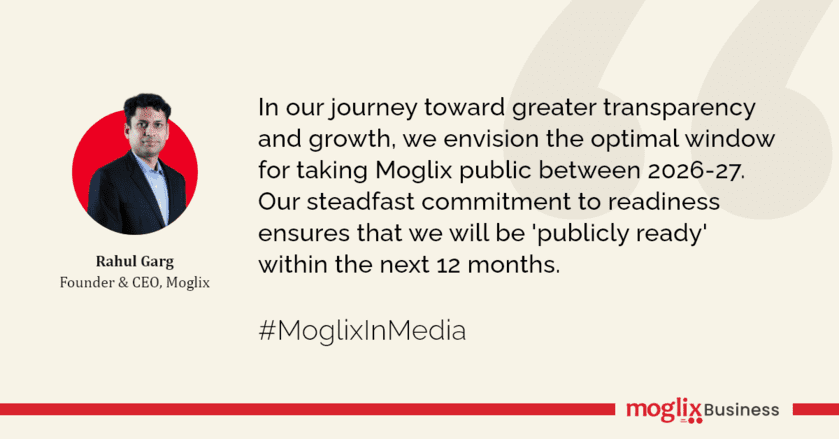
Moglix`s Path to Public Listing by 2026-27
Exploring various market options, Moglix finds India to be the top choice, as emphasized by Mr. Rahul Garg, Founder & CEO. He points to the company’s robust brand presence, making India an appealing listing prospect. Additionally, he highlights the remarkable growth of India’s public market and the abundance of investor capital available. Since its inception in 2015, Moglix has been providing procurement, packaging, supply chain financing, and integrated software solutions. Notably, its unicorn round in 2021 was led by Alpha Wave, with investments from Tiger Global, Jungle Ventures, Ward Ferry, IFC, and Accel.
Read More17th Annual India Chemical Industry Outlook Conference and Exhibition

17th Annual India Chemical Industry Outlook Conference and Exhibition
Date: 29th February 2024
Organizer: Indian Chemical Council (ICC)
About the Event: Moglix was honored to be the “Procurement Partner” at the prestigious 17th Annual India Chemical Industry Outlook Conference & Exhibition, hosted by Indian Chemical Council (ICC).
Unlocking Automation`s Potential: Empowering Women in B2B Commerce
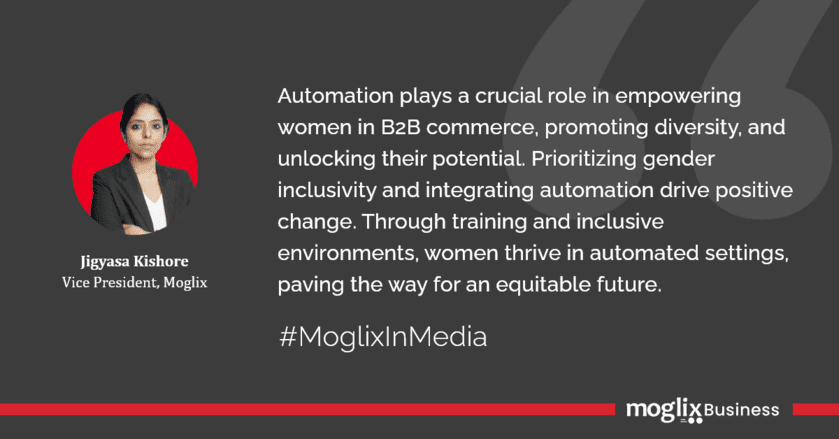
Unlocking Automation`s Potential: Empowering Women in B2B Commerce
Innovative technologies are shaping the future of B2B commerce automation. Women equipped with the appropriate skills can utilize automation tools to enrich their roles across various industries, especially in supply chain management. Automation not only provides avenues to enhance productivity but also promises ongoing transformation in B2B commerce, delivering heightened flexibility and efficiency. Central to this evolution will be the integration and automation of procurement processes.
Read MoreOutlook Business Spotlight- Indo Global Business Excellence Awards and Summit 2024
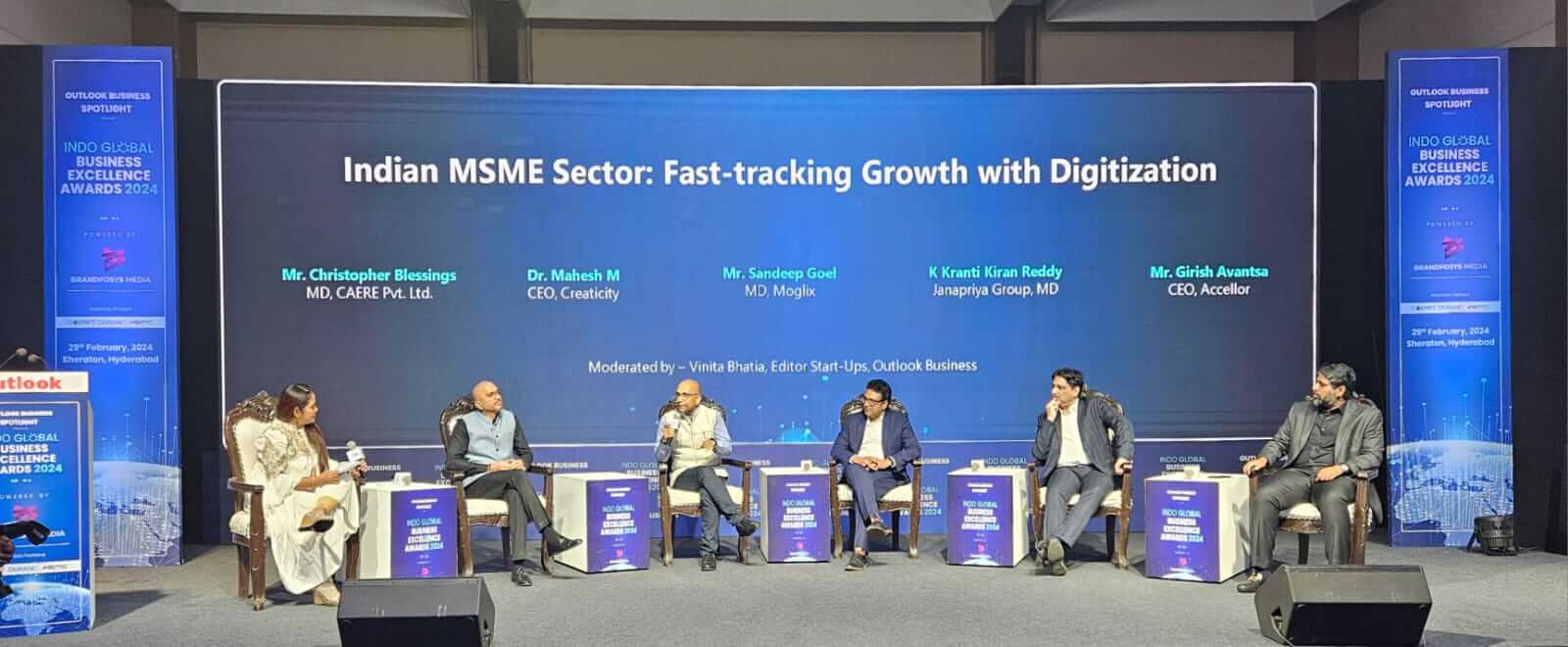
Outlook Business Spotlight- Indo Global Business Excellence Awards and Summit 2024
Date: February 29th , 2024
Organizer: Outlook
About the Event:Mr. Sandeep Goel, Managing Director, Moglix, shared his expertise on ‘Indian MSME Sector: Fast-tracking Growth with Digitization
Moglix aims to onboard 500 new professionals within the next 18 months

Moglix aims to onboard 500 new professionals within the next 18 months
Moglix is on the verge of significant expansion! Over the next 18 months, we’re set to onboard 500 new talents to solidify our standing as India’s premier B2B commerce platform. Join us in reshaping the landscape of B2B commerce and propelling growth in the manufacturing and infrastructure supply chain sectors.
Come be a part of our exhilarating journey of expansion and innovation!
Bharat Tex 2024

Bharat Tex 2024
Date: September 26th , 2024
Organizer: Messe Frankfurt
About the Event: Moglix fashion participated in the world’s largest textile fair and are delighted by the enthusiastic engagement from all the attendees.
Revolutionizing Garment Production: AI and Automation Transform the Future, Boosting Efficiency and Precision
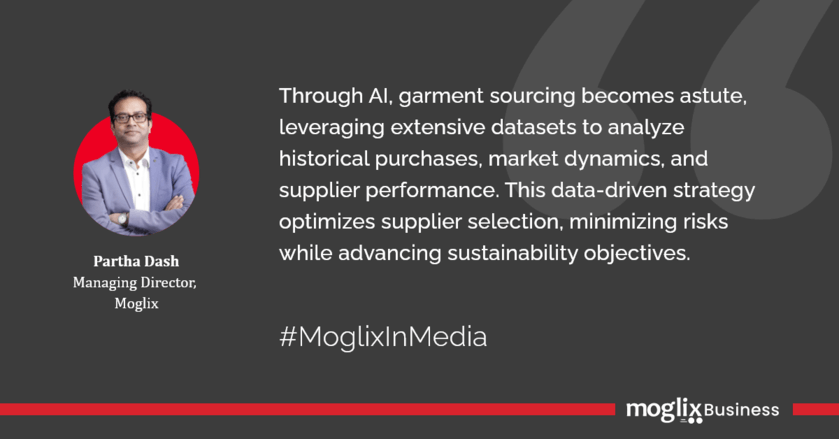
Revolutionizing Garment Production: AI and Automation Transform the Future, Boosting Efficiency and Precision
Manual garment production processes, long relied upon, come with inherent limitations. Tasks repetition leads to fatigue and errors, causing quality inconsistencies and missed deadlines. Supply chain bottlenecks frequently result in production delays, while procurement suffers from limited information and forecasting inaccuracies, driving inefficiencies. These challenges result in high costs, dissatisfied customers, and an industry struggling to adapt to market dynamics.
Read MoreStreamlining Procurement: The Power of P2P Automation

Streamlining Procurement: The Power of P2P Automation
As a Chief Procurement Officer, staying ahead with technology is crucial. P2P automation is a game-changer, breaking down old barriers in procurement. Gartner’s report shows a big move towards this, with the procure-to-pay market growing fast, expected to reach $13.4 billion by 2025. Automation can make your processes smoother, quicker, and more efficient. It’s all about making smart moves now to lead in the future.
This blog will explain how procure-to-pay software revitalizes your businesses, especially if you follow a traditional approach involving repetitive tasks.
The Evolution of P2P
The evolution of the Procure-to-Pay process has remained a contemplating point for CFOs and CPOs to increase efficiency and savings. The traditional manual procure-to-pay cycle, coupled with inefficiencies and poor spend visibility, contrasts starkly with the clarity and compliance of automation.
Moglix shows how a tire company could save money by changing how it does P2P. The company initially needed help with manual tasks and a need for unified suppliers. However, by automating P2P, they achieved a 3% cost decrease, a 95% OTIF rate, and a shorter PR-to-PO period of two days. This shows how efficient technology is, which is important for CFOs and CPOs who want to cut costs.
Navigating Challenges for Business Efficiency
A prominent EPC company’s MRO procurement process could have been more efficient due to a fragmented supplier base, inefficient multi-step processes, lack of standardized catalogs, and delayed order processing times. These challenges caused delivery delays, quality issues, and higher procurement prices. Moglix’s procurement workflow digitization helped solve these issues. Moglix implemented a streamlined procure-to-pay solution to improve procurement efficiency and transparency and reduce MRO procurement costs by 20%, proving that digital transformation can overcome operational challenges.
Final Words
When organizations upgrade their P2P method, they can cut costs, save time, get better visibility, and make mistakes less likely. Chief financial officers can learn more about how much money is being spent, which helps them control costs and negotiate better. Automation cuts down on manual chores by a large amount; A uniform system makes it easier to see what’s happening and make decisions. Automation in accounts payable lowers the chance of mistakes. In the end, P2P automation makes making requests easier, recording invoices, matching them, getting approval, and connecting them to ERP systems. This helps keep costs down, speeds up processing, and ensures correct financial reports.The procurement-to-pay process allows businesses to make wise decisions and enhance their financial operations. So, it is prudent for companies to proactively take consultations from experts like Moglix to learn more and resolve their supply chain issues.
Reference:
Red Sea Crisis Impact on Supply Chains: Key Info for CPOs
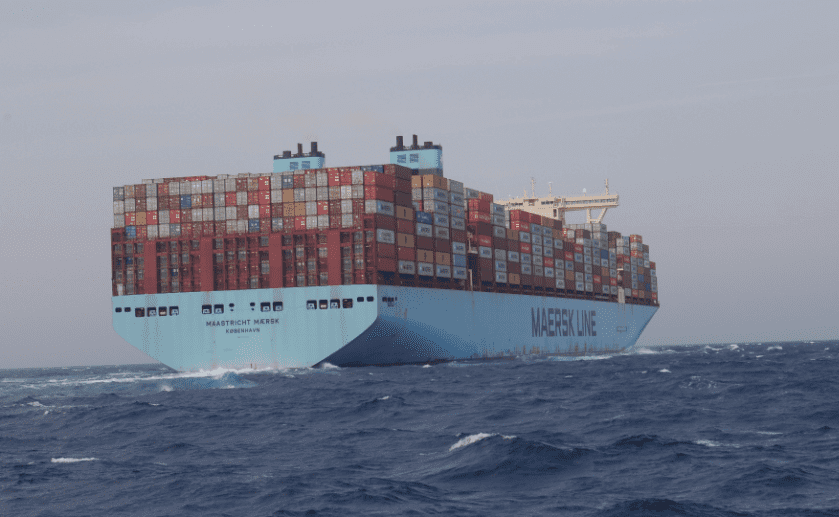
Red Sea Crisis Impact on Supply Chains: Key Info for CPOs
As stated by an official, the Red Sea crisis [1], sparked by Houthi rebels in November 2023, has severely disrupted global supply chains, particularly impacting Asia-Europe trade routes via the Suez Canal. According to UNCTAD, there’s been a 28% [2] decrease in daily canal transits in early January 2024, forcing reroutes that add significant costs and delays.
According to a Geopolitical Monitory research, this conflict skyrocketed shipping costs by 173% [3]. This alarming situation is a critical wake-up call for Chief Procurement Officers globally, emphasizing the urgent need for robust risk management and contingency planning in supply chain operations.
To mitigate global shocks, Chief Procurement Officers must focus on Strong supply chain management, risk analysis, planned route diversification, and quick response to enhance overall supply chain resilience.
The wake-up call
The crisis in the Red Sea is changing how we handle world trade and supply lines in big ways. Shipping charges amplify when routes have to be changed because of it. There are a lot of problems in fields that depend on buying and selling things across borders, like energy, technology, and car manufacturing. It’s important to have good supply chain plans to keep things going easily and drop risks. The main goals of these plans should be to get things from different places, better track of stock, and use various transport methods.
It has had a huge effect on the world economy. As per a Geopolitical Monitor study, the cost of shipping a 40-foot container from Asia to Northern Europe has risen by $4,000 [4]. Vessel insurance prices also increased: for a $100 million vessel, the cost increased from 0.1-0.2% to 0.5%, $300,000 to $400,000 [4]. This cost increase is putting inflationary strains on the region’s fragile economic recovery.
Especially in light of the Red Sea situation, Chief Procurement Officers (CPOs) need to understand how important transparency in the supply chain is. According to a study by Harvard Business Research, 90% [5] of leaders think being more open encourages employees to make more informed choices. Supply chain apps that use digital tools like blockchain and AI can better track and manage risks, which makes things simpler. Buyers and sellers need to speak clearly and regularly so that information can be shared and decisions can be made quickly. This way of doing things is important for improving businesses and dealing with tough global trade problems.
Another important lesson is how to outsource in the supply chain. This is what more than 80% of supply chain workers do when they want to raise the cost of outsourcing. Utilizing the expertise of outside delivery companies enables businesses to concentrate on their core operations.
Streamlining Complexity
A case study shows how important it is to have strong supply chain plans and clear communication between all parties involved: A tire manufacturer with seven plants struggles with supply chain issues, such as keeping track of more than 8,000 line items and 600 sources, which slows things down and wastes time. Even though these things went wrong, they could save 3% on their overall costs.
Final words
Finally, the Red Sea situation emphasizes the need for Chief Procurement Officers to engage in supply chain digital transformation. This transformation is critical for successful supply chain management, allowing organizations to negotiate complex global difficulties while increasing resilience. Adopting digital solutions in supply chain management services is critical for risk mitigation and operational efficiency. Explore professional insights and modernize your supply chain with Moglix. Delve into disruptive tactics and find comprehensive solutions to enhance your operations.Explore professional insights and modernize your supply chain by delving into disruptive tactics and discovering comprehensive solutions. For more information, turn to Moglix.
References:
- https://economictimes.indiatimes.com/red-sea-crisis-affect-on-indias-trade/articleshow/107402330.cms
- https://www.msn.com/en-in/news/India/red-sea-crisis-affect-on-indias-trade/ar-BB1hKnOA
- https://www.geopoliticalmonitor.com/red-sea-crisis-exposes-a-weak-point-of-global-maritime-trade/
- https://www.geopoliticalmonitor.com/red-sea-crisis-exposes-a-weak-point-of-global-maritime-trade/
- https://www.basware.com/en/resources/harvard-business-review-analytic-services-using-transparency-to-enhance-reputation-and-manage-business-risk
